Sarah Gwyer is known for her exuberant portraits, in which she expertly combines a rainbow of colourful threads with a vast treasure-trove of beads and charms. The result is painstakingly crafted images and sculptures of famous faces that explore celebrity culture, consumerism and commercialism.
Inspired by the bold, brash artworks of Andy Warhol, James Rosenquist, Jeff Koons and Damien Hirst, Sarah takes the notion of Pop Art one step further, using craft concepts to create richly embellished surfaces.
Like her approach to materials, Sarah brings a variety of craft techniques to her practice, from thread painting and an array of embroidery stitches to beading. But, more unusually, she also makes use of digital processes in order to collage the perfect image – and avoid copyright issues in the process.
As you can see, the results are dazzling: beautifully observed likenesses that draw you in as you try to identify all the different parts that make up the whole.
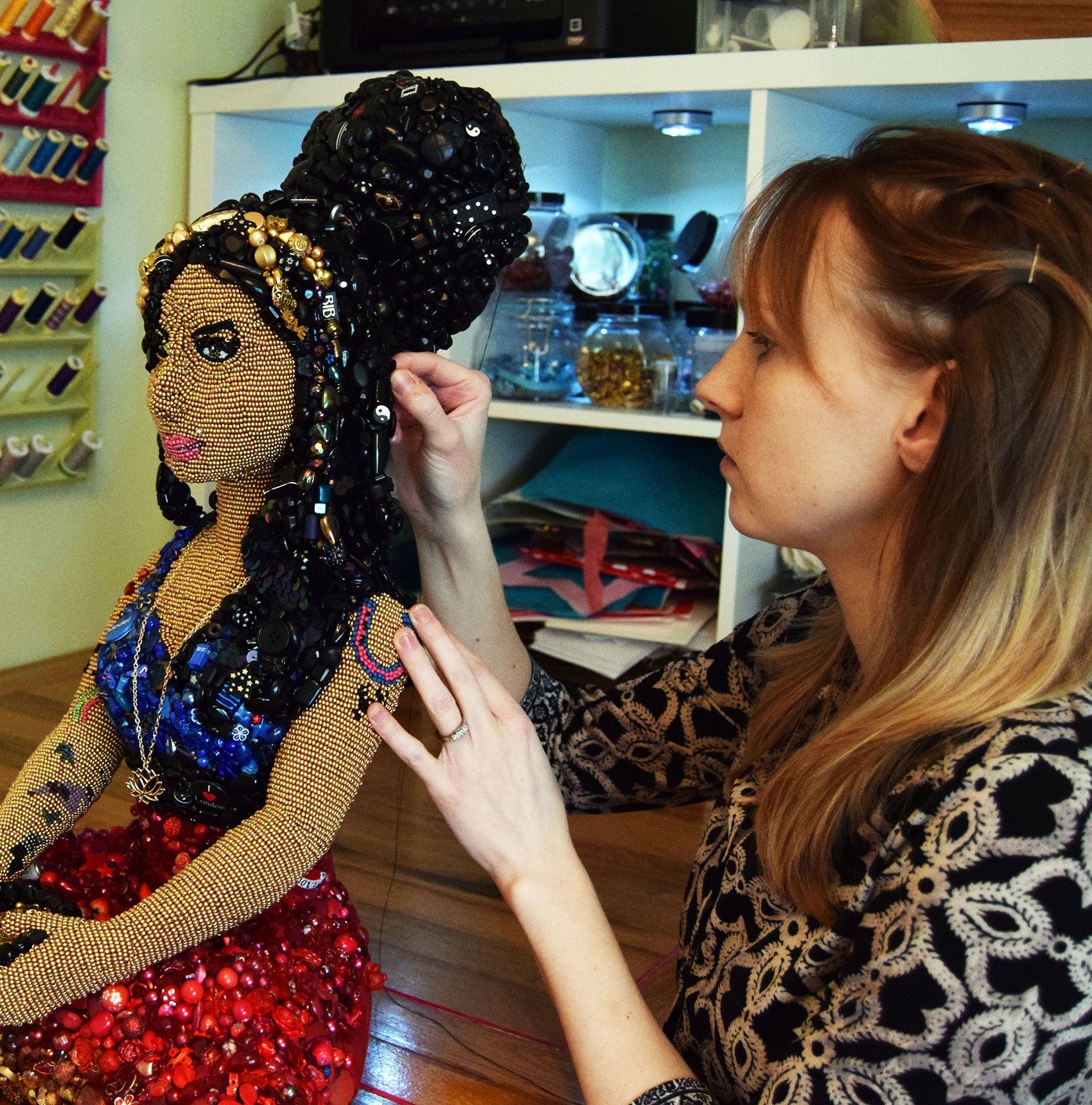
The benefit of great teachers
Sarah Gwyer: The thread itself first attracted me to textile art as a medium. It gives such versatility and strength. Thread can be used in so many ways to tell a story.
I love its heritage and feel passionately that textile art is too often overlooked in the art world. I wanted to play a small part in changing that.
I grew up around lots of crafting. My maternal Grandfather was a wood carver; I used to love spending time in his workshop and this is where I first learnt how to work in three dimensions. I was fortunate that my school, Newent Community School, truly valued the visual arts. All my teachers were, and still are, practising artists.
My work has been particularly influenced by James Rosenquist. I visited his Retrospective at the Guggenheim New York and the scale of his work is often in the back of my mind. I loved how easy it was to access visually, the colours and the ambitious size of his work; his painting F111 is over 83 feet! I’ve always believed art should be for all and that you can make a statement without alienating the audience. All of his work does this and it is visually stunning to boot.
My daily life has a large influence on my work, trying to bounce around all the things women are expected to be while balancing my career and a young family. These experiences have led me to explore the concept of womanhood in today’s world.
This balancing act would not be possible without very supportive family and friends.
I’d known I’d wanted to work in the visual arts since primary school. I set my sights on completing an art foundation course. During this course, I confirmed that I wanted to become an artist. I accepted a place on a Fine Art degree at Cardiff Metropolitan University. From there I went on to a Masters in Printmaking at the University of Arts London.
While studying in London I was picked up by a commercial gallery, which enabled me to start off my professional career in 2008.
A few years later I took some time out to start a family and as they got older and started school I’ve been able to pick up where I left off.
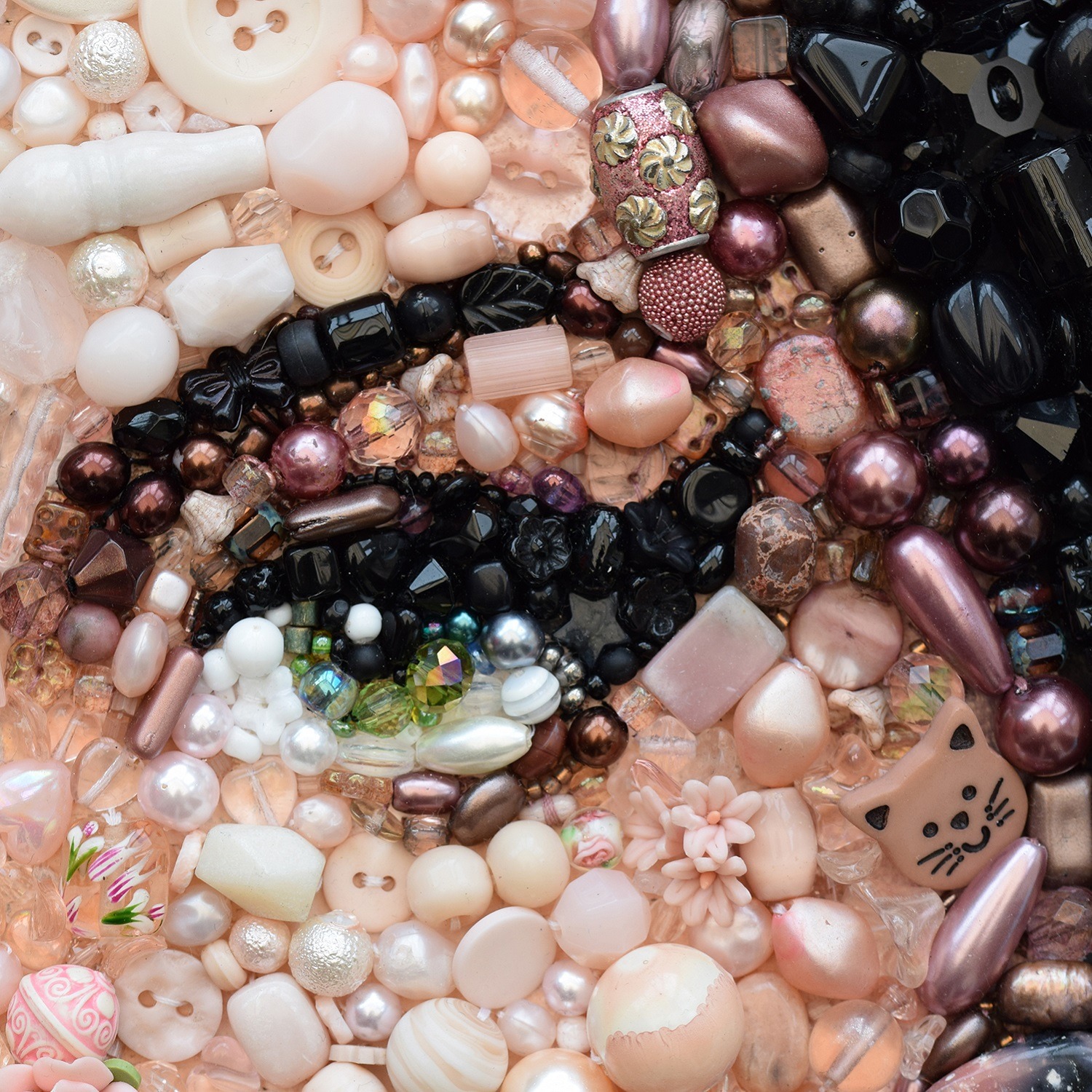
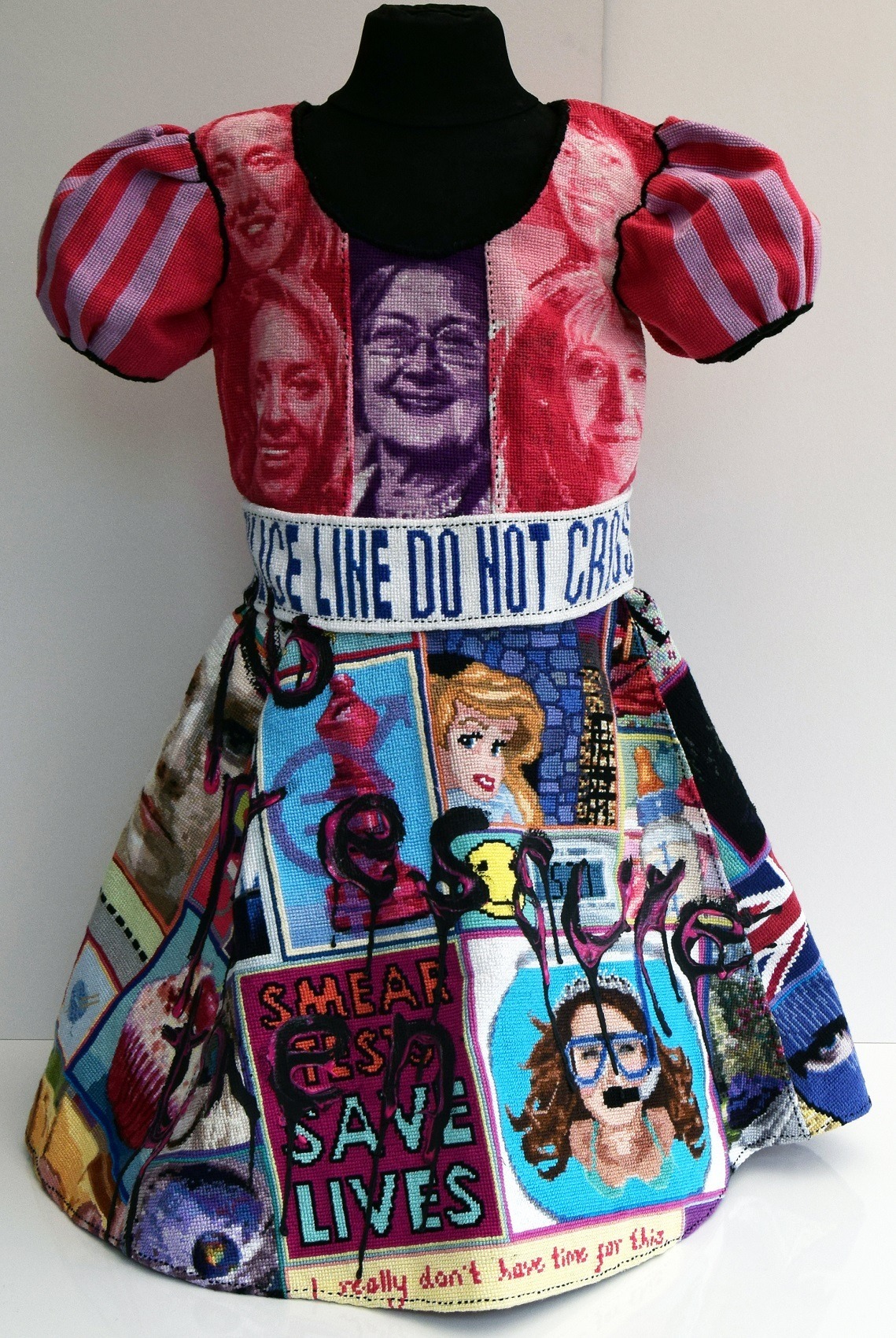
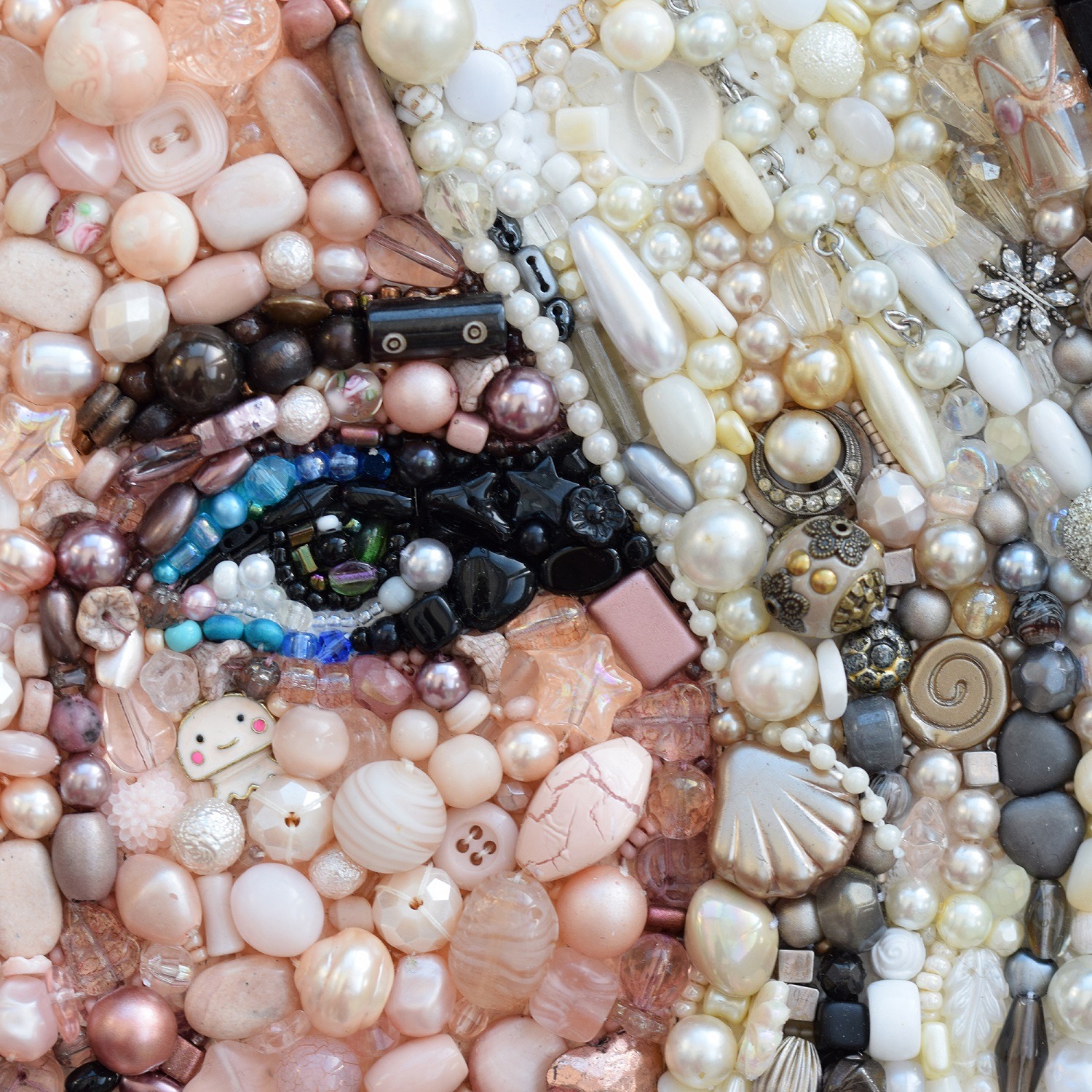
The starting point
As I’m stitching a piece I’m already thinking ahead to the next. Each work takes several weeks or longer so normally I have a fully-fledged idea or two ready to go.
To start, I create a digital composite by sifting through hundreds of images of the chosen subject. For example with the Duchess of Cambridge, her hair, face and body are all from different photographs. I looked for pictures with the most ‘Kate’ hair and found the best image of her looking right into the camera. By merging these source images it also ensures there are no copyright issues with my work. I then sketch my design out onto a canvas.
Whether I’m using beads or cotton threads I always start with the eyes first. I find it helps with proportion and it’s the one aspect that needs to be exactly spot on, or it will have a negative huge effect overall.
I then tend to work outwards in every direction. I might avoid an area if it’s particularly difficult, for example, the hands. I try to complete the tricky areas working in natural light and with absolutely no distractions.
For thread-painting, I normally use two threads at a time and a size 8 needle. I knot the end rather than weaving it in because I’d rather have a messy embroidery back than a missing needle. When I’m struggling for a colour match I use one thread from two of the nearest shades and twist them together. Most of my portraits have used this colour mixing technique at some point
My stitching method is simple; a lot of silk shading, a little chain stitch and occasionally French knots to add some extra texture.
For bead embroidery, I stitch through every bead at least twice and charms added to wall-hung pieces are anchored down, so there is very little movement in them. I work in clusters to ensure the sizing of beads is fairly equal throughout the work.
My Instagram feed is often full of fun new things I’ve spotted. Sometimes I come across a charm that instantly reminds me of a particular celebrity and a portrait evolves from there.
I’m also honoured to be a member of the Society for Embroidered Work. I’m in awe of my fellow members’ work and they have inspired me with so many new stitches and techniques to experiment with.
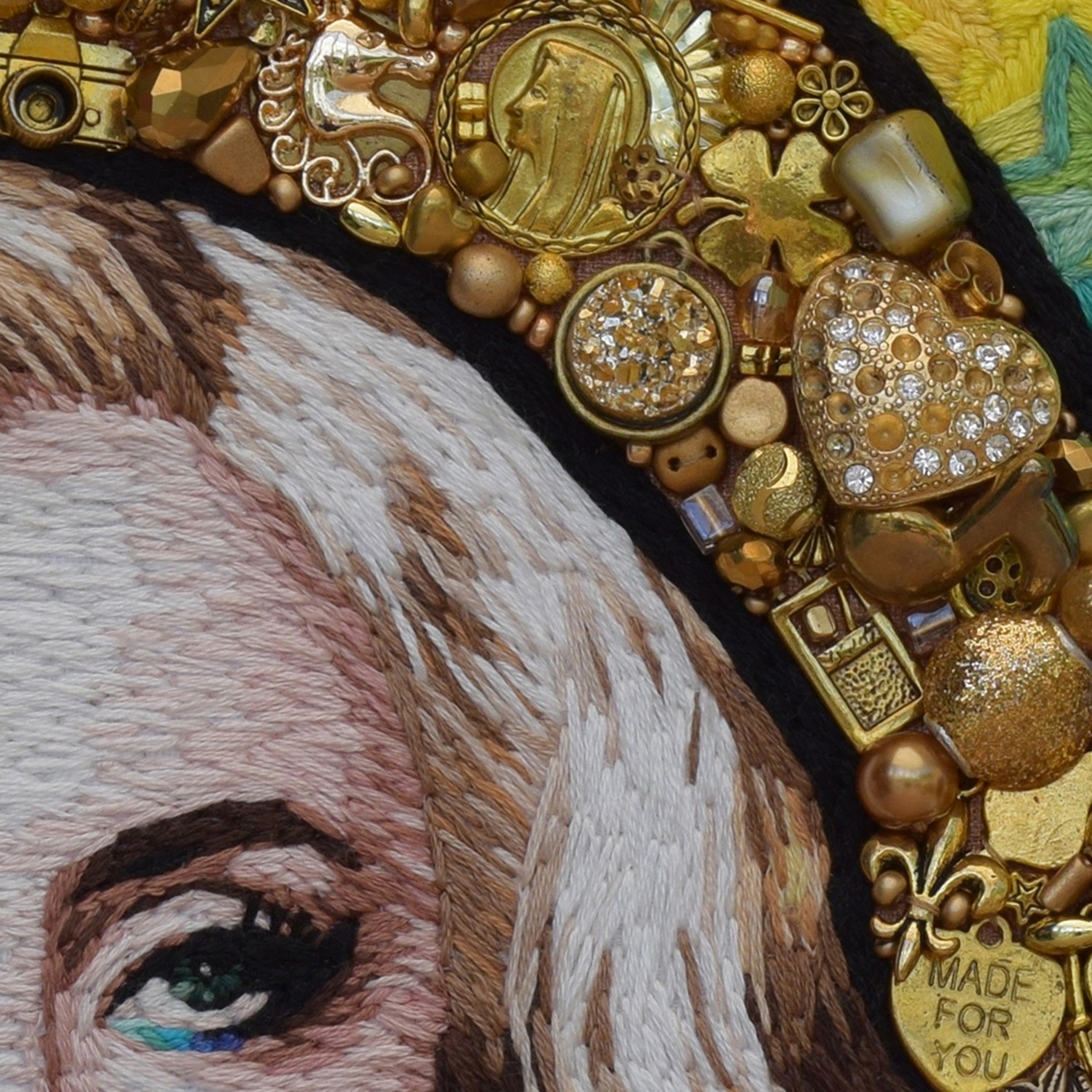
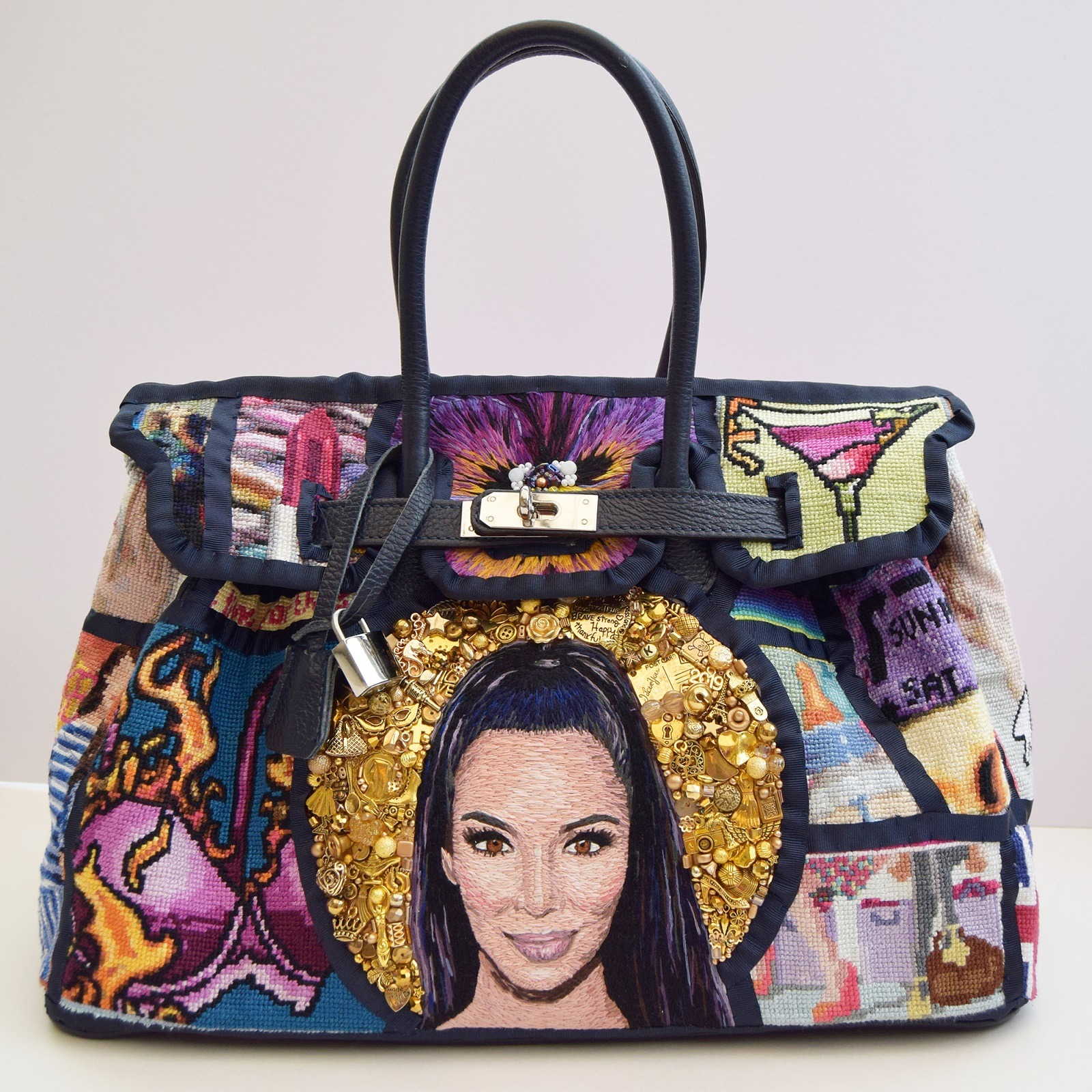
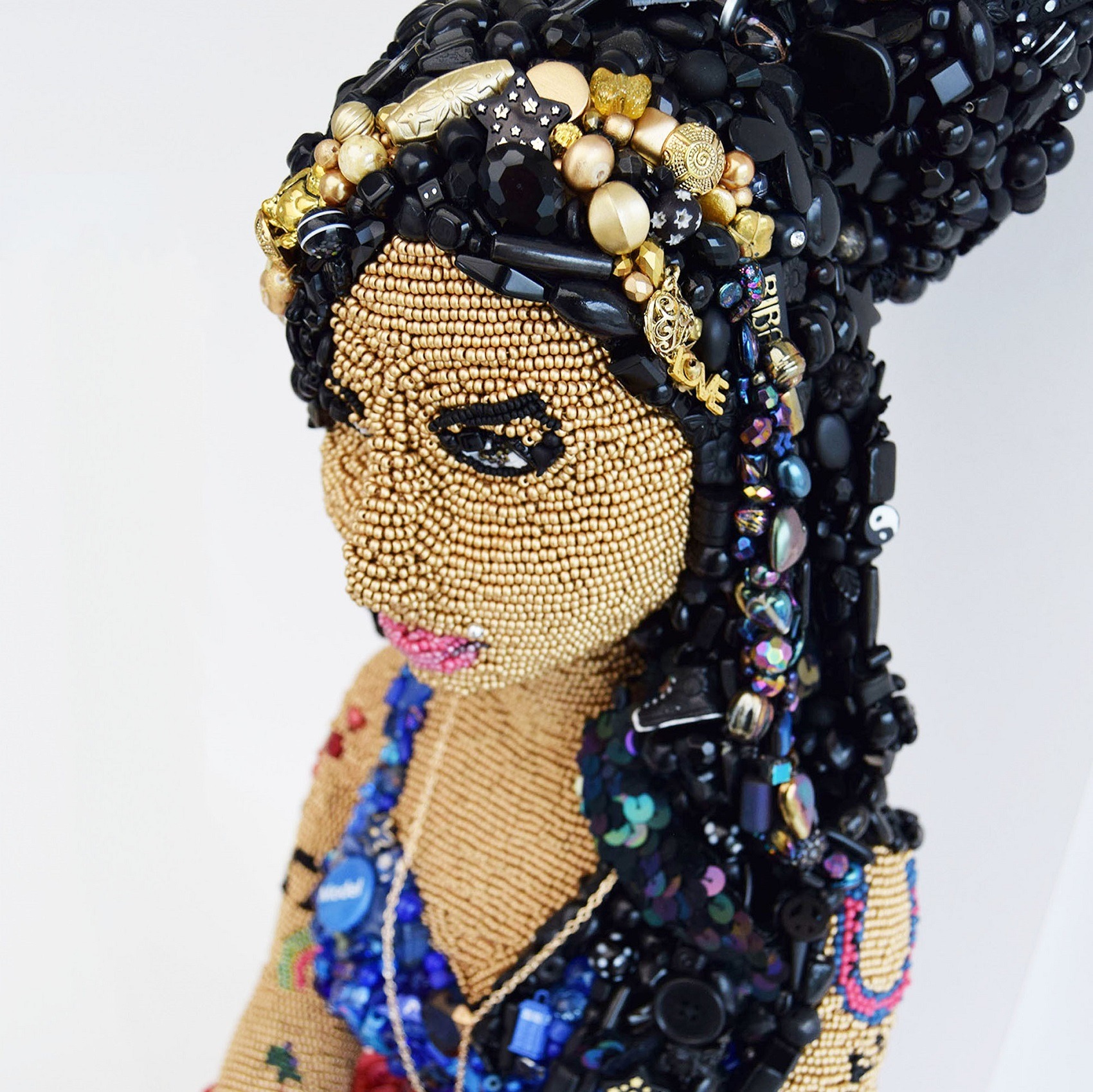
The allure of Amy
My favourite work is a sculpture ‘Amy Remixed’, stitched in 2017. It’s a 3D beaded portrait of Amy Winehouse sitting in a Buddhist pose and features thousands of hand-stitched embellishments.
Amy is a subject I’ve returned to a lot and I feel the piece was a great culmination of the last few years of work. After five years of trying, this was the piece that finally enabled me to exhibit at the Royal Academy’s Summer Exhibition. Achieving this accolade was definitely worth it, despite dealing with the numerous previous rejections. A BBC2 crew followed my entry that year, bringing bead embroidery to new audiences.
My work has developed a more refined style over time and, aside from creating limited edition prints of some of my embroidered works, I’ve left behind printmaking entirely.
I’ve become much more aware of the environmental challenges the world faces and have started to produce work that acknowledges this, as well as continually finding ways to make my practice more sustainable.
Going forward I see my practice almost splitting in two; with smaller portrait works on one side, and large, ambitious pieces on the other. I’m currently working on a large multi-panel thread-painting that will take me through the next decade, if not longer.
I feel we are on the cusp of brilliant change as a society and I’m really excited to be stitching through it.
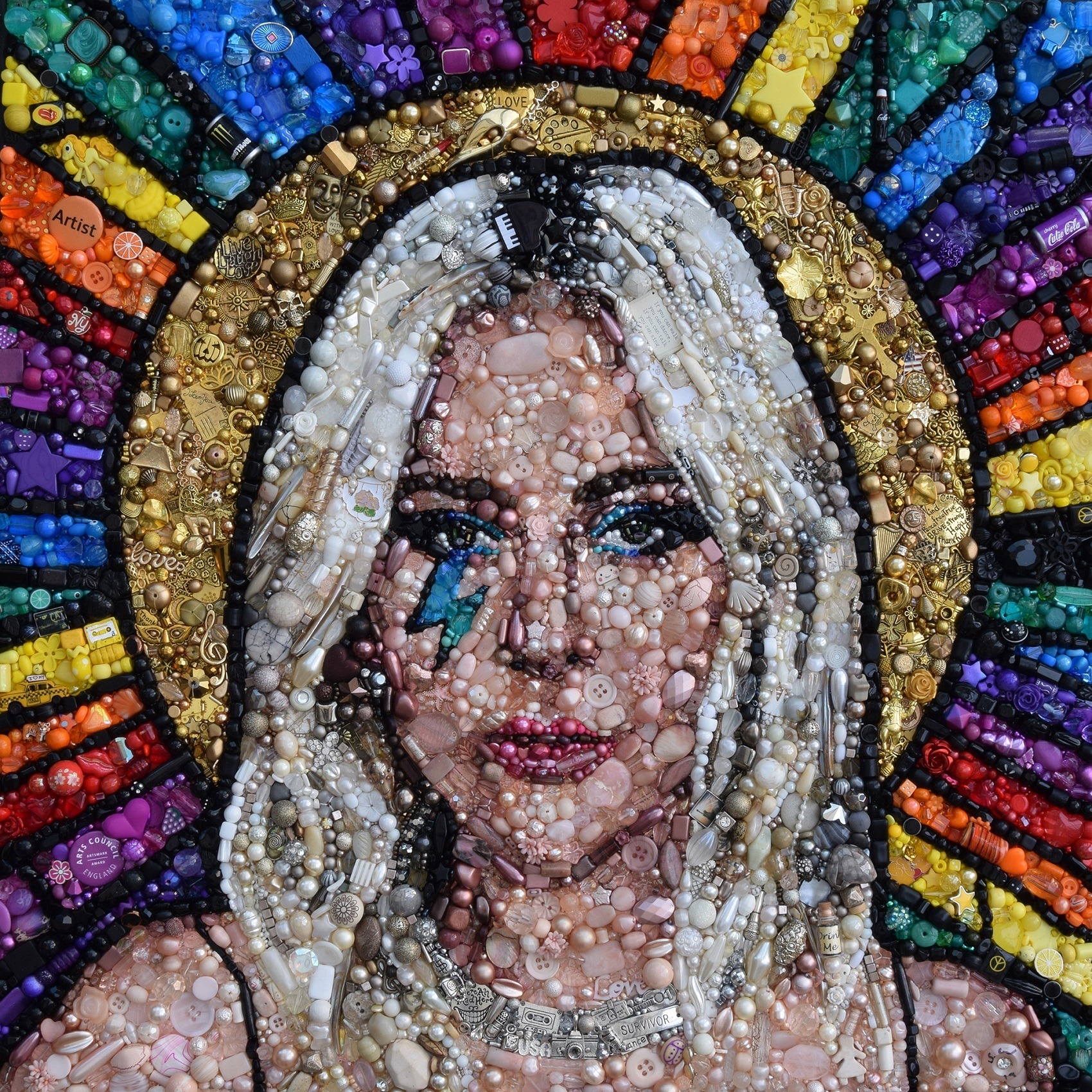
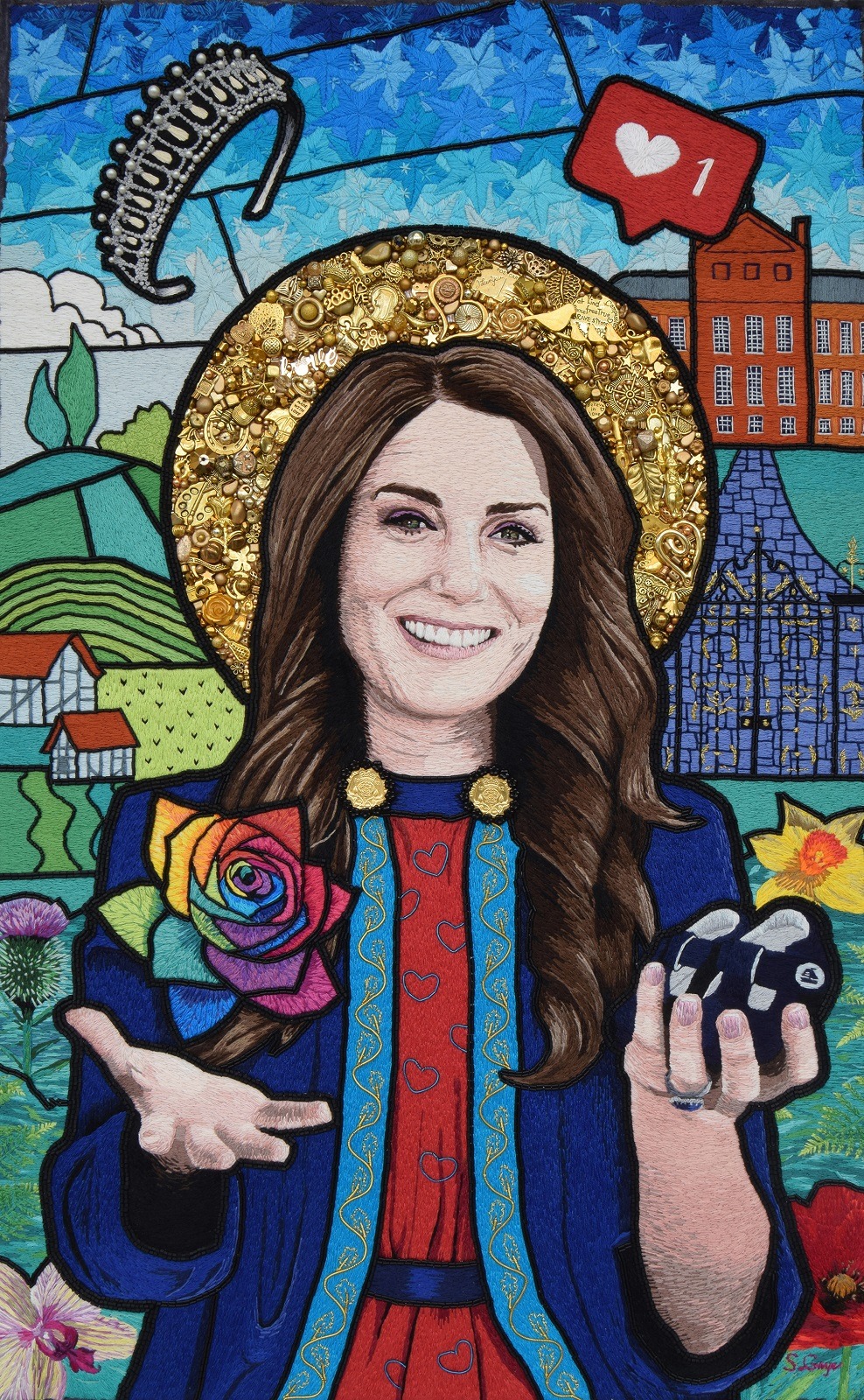
Starting out, there are two main pieces of advice I wish I had known.
The first is to always thoroughly document and photograph all of your work.
I have several pieces of work that I have no visual record of, but they are out there somewhere. It helps you develop your work and style if you can look back on it.
The second is to persevere.
Take a really long-term view of your career. For the vast majority, it takes years if not decades to build up to a full-time career as an artist.
About the artist:
Sarah studied Fine Art at Cardiff Metropolitan University, followed by a Masters’ degree in Printmaking at the University of the Arts, London. In 2019 she won Best Use of Colour in the National Needlecraft Awards. She has exhibited in the UK and in New York, including at the Columbia Threadneedle Prize exhibition in 2018 (Mall Galleries, London) and at the Royal Academy of Arts Summer Exhibition (London) in 2017.
Website: www.sarahgwyer.com
Instagram: @sarahgwyer
If you enjoyed this article on Sarah’s radiant world of rainbow-coloured threads and charms, then let us know by leaving a comment.
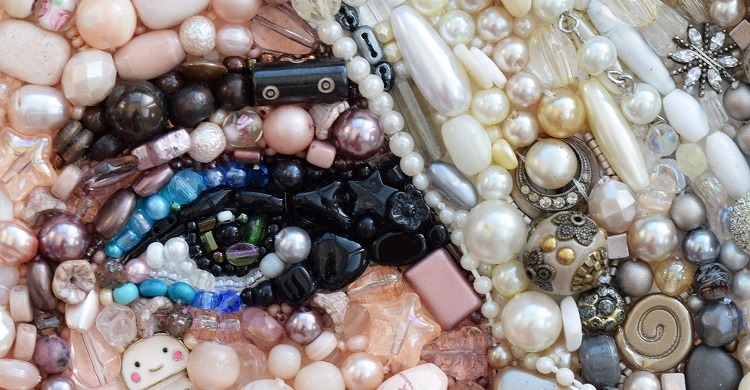

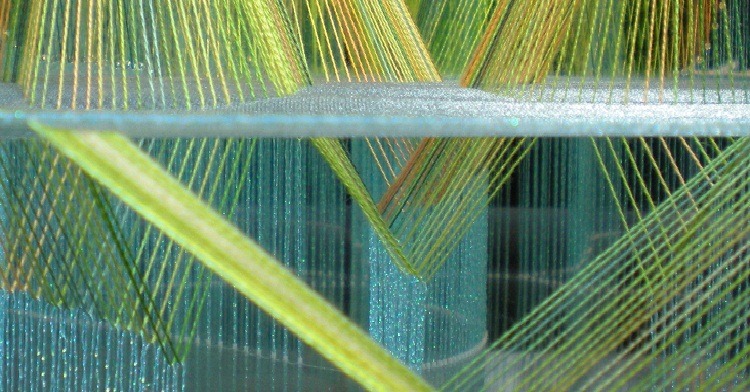
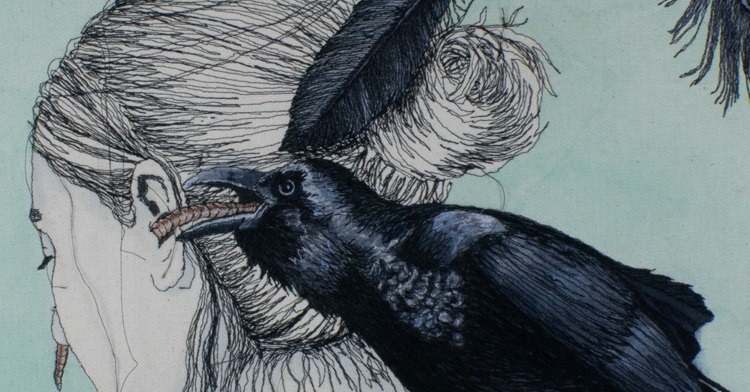
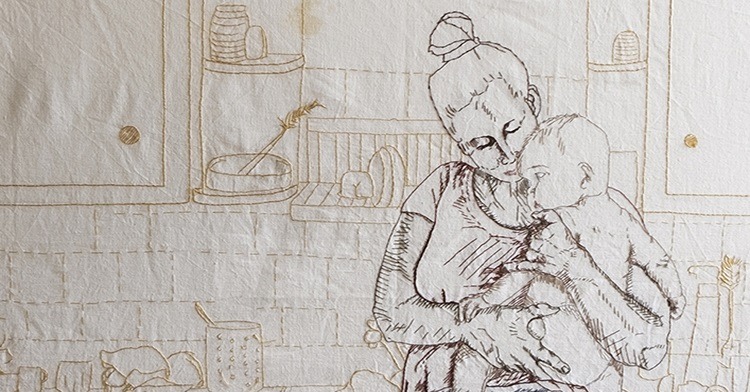
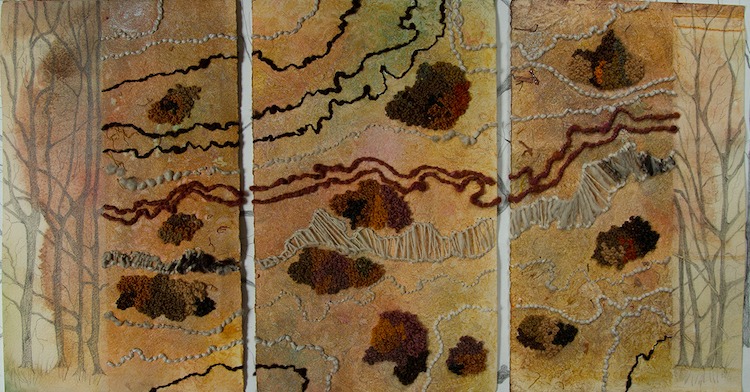
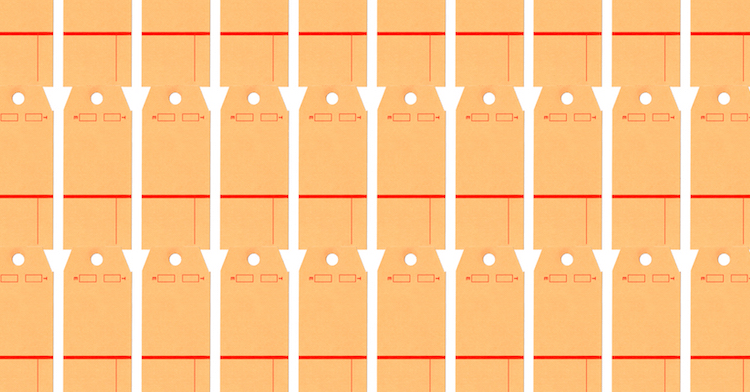
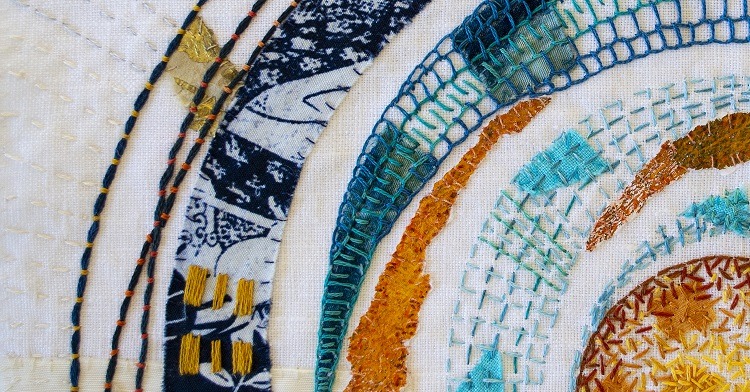
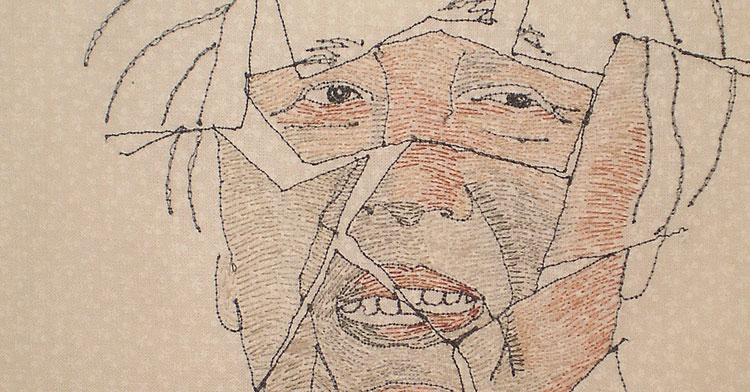
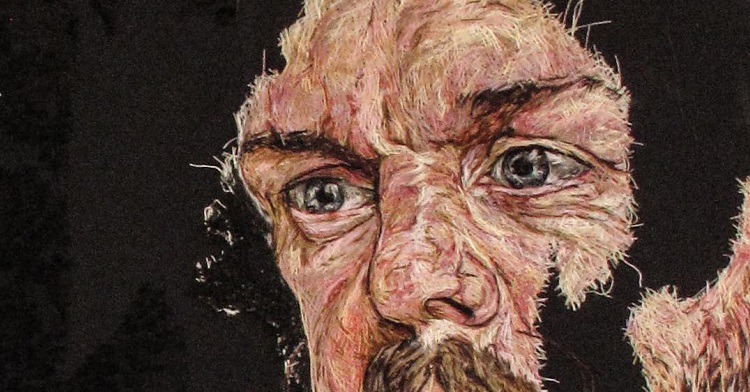
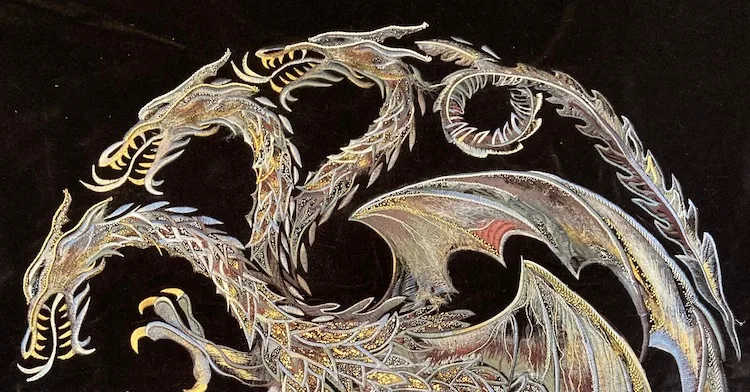
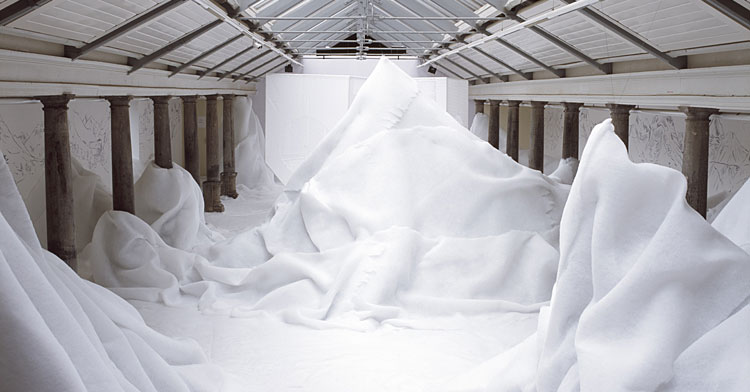
5 comments
Pat
Stunning!
J.
Beautiful work, and craftsmanship
Claudia
I’ve really enjoyed this article and seeing Sarah’s additional work on her website – what a talented young woman!! It’s hard to believe the visual accuracy she achieves with both thread painting and beadwork.
ann fenwick
I love this community! Our Embroiders guild has had a number of British textile artists visit for summer workshops and so names come up that I am familiar with. I don’t embroider as much now in my mid 80’s and hands that work slowly due to arthritis but that doesn’t stop me from enjoying what others are doing. Thank you for bringing us all together.
Joanne Laessig
I am particularly impressed with the clean, uncluttered feel of areas covered in beads and charms. It makes me aware of the large scale of these pieces, having done extensive work with seed bead embroidery since 1985. The finely crafted images rendered with larger, differently shapef beads is stunning. I am charmed by her exuberant colors,mas well – it is just to my taste. Her work impresses me more than any embroidery I have seen in years.